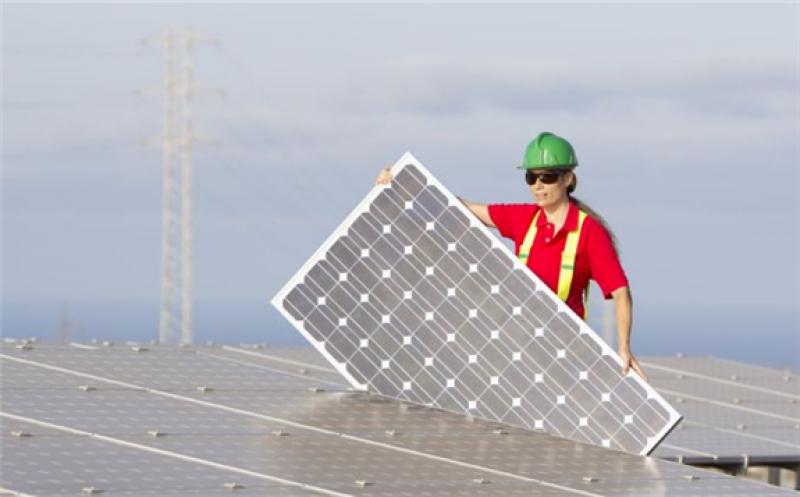The U.S. solar industry hasn’t completely returned to its pre-pandemic prosperity, but solar has still grown enough to claim the greatest share of electricity generation installations in 2020.Solar has accounted for 43 percent of electricity-generating capacity additions in the U.S. so far this year, even as the industry struggled to work around coronavirus shutdown orders and pandemic-adjusted timelines, according to the Solar Market Insight report released Tuesday by Wood Mackenzie and the Solar Energy Industries Association. Overall, the industry boosted Q3 installations 9 percent over the pandemic-constrained second quarter. Analysts expect 2020 to surpass 2016 as a record year for large-scale solar projects.

The rebound indicates the industry’s resilience “even in [its] darkest moments,” said Abigail Ross Hopper, SEIA’s president and CEO.
Though certain segments of the industry have called for help such as clean energy-related stimulus and changes to tariffs on imported cells and modules, the data again shows the solar industry has largely coped with the political and economic challenges of recent years. Despite uncertain policy and an economic crisis, solar continues to proliferate. The industry is hoping to flourish even more significantly in the next four years, with pro-clean energy Presidet-elect Joe Biden soon to take office.
In 2020, large-scale solar additions continued to buoy overall solar deployment numbers as utilities, states and corporations signed contracts for big projects. In November, Invenergy said it had started construction on a 1.3-gigawatt series of phased projects in Texas, slated to be the largest installation in the U.S. In Q3, utility-scale solar accounted for about 70 percent of all installations.
The residential segment experienced greater market whiplash. Installations increased 14 percent from Q3 to Q2, after a record drop of 23 percent from Q1 to Q2. The biggest fluctuations cropped up in states with the strictest coronavirus shutdown orders, such as New York, California and New Jersey.
“Logically, the states with the biggest installation declines in Q2 also had the biggest recoveries in Q3,” said Michelle Davis, a senior solar analyst at WoodMac.
Promotional discounts and rebates, plus a shift to online sales, appear to have helped blunt the impact of shutdowns as time went on. Many jurisdictions also allowed solar installations to continue despite restrictions on non-essential activities.
Analysts now expect 7 percent annual growth for residential installations, a figure just below forecasts laid out prior to the pandemic.
The recovery has been uneven, though. While many of the residential sector’s largest players, such as Sunrun and Sunnova, have reported a rebound with record sales and inquiries, other companies have been plagued by layoffs. The industry overall has lost tens of thousands of jobs. In December, Sungevity planned to auction off its assets.
Despite all the difficulties of the year, analysts forecast 2020 will end with more than 19 gigawatts of capacity installed in 2020, compared to about 13 gigawatts in 2019. And with the investment tax credit set to step down in 2022 to hover at 10 percent for third-party owned systems, 2021 is also slated to be a growth year independent of any additional policy help the industry may secure once the new administration begins its work.